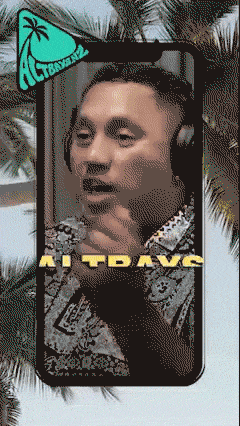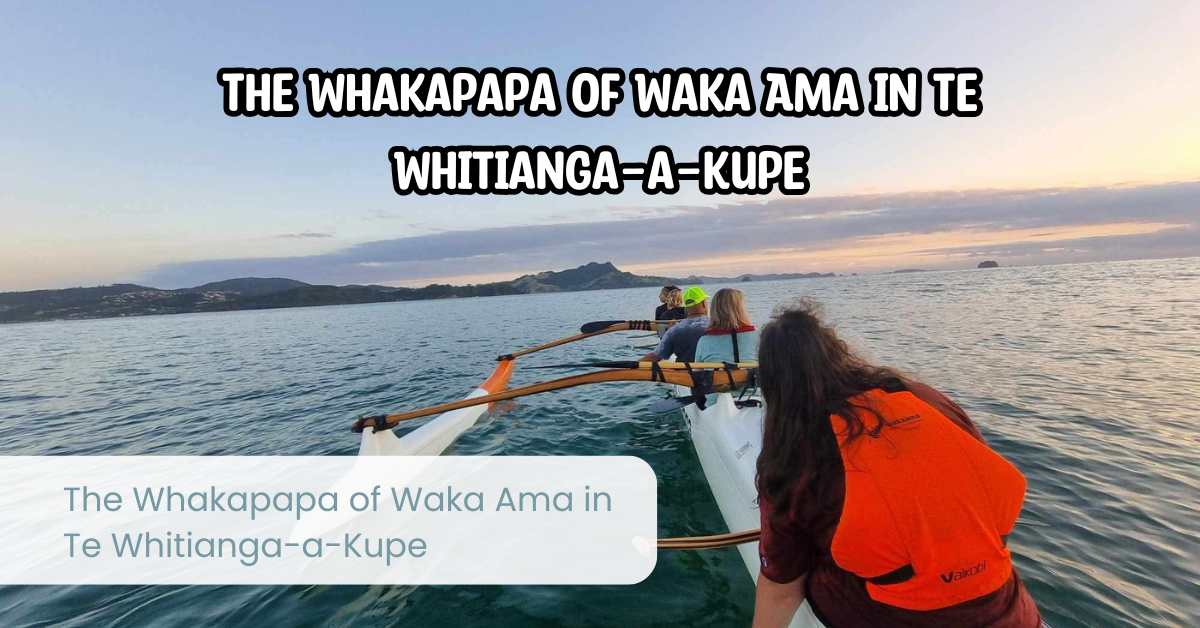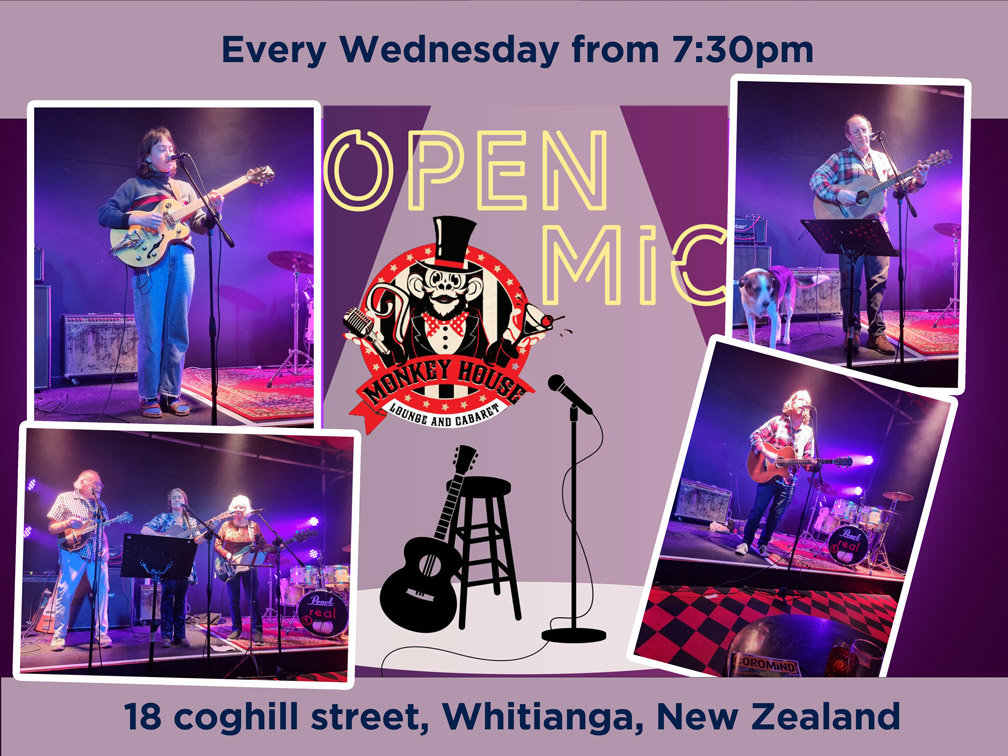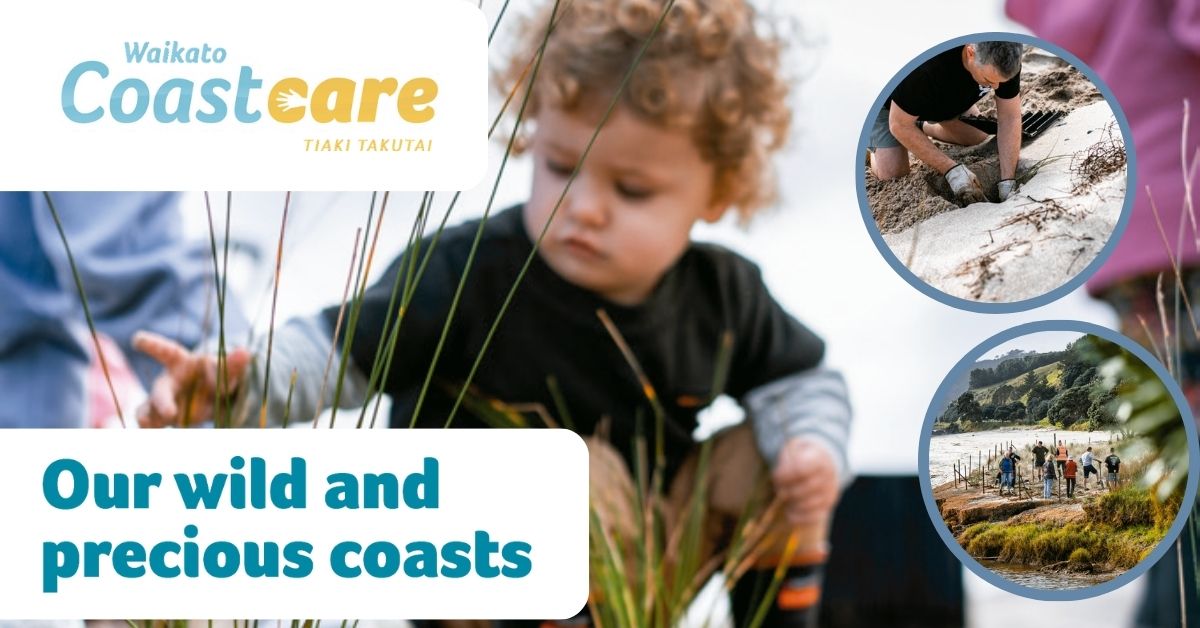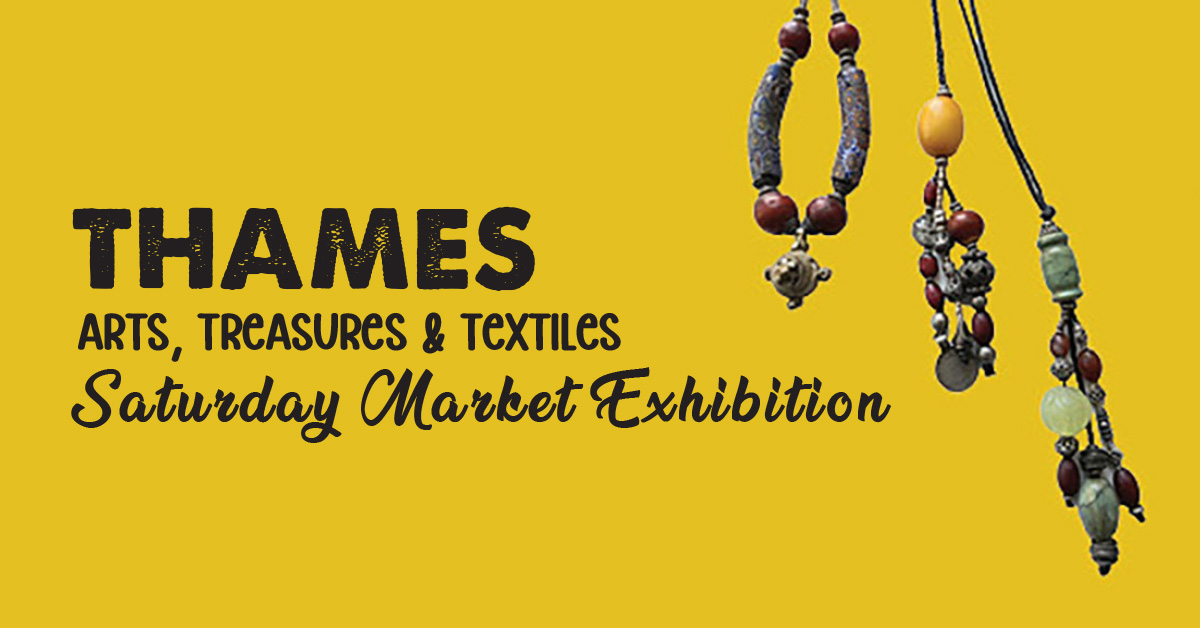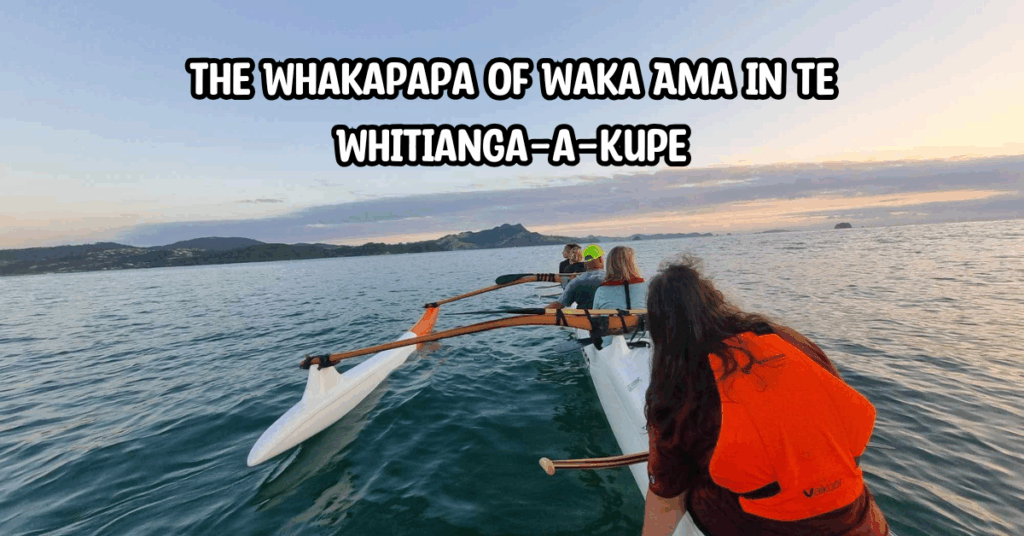
Honouring the Past, Paddling into the Future
Nau mai, hoki mai! Welcome to part two of a kōrero from passionate club members Mike Bennett (Club President) and Natalie Jones (Club Secretary), who are dedicated to connecting kaihoe (paddlers) with the wai, each other, and kaupapa Māori (customs).
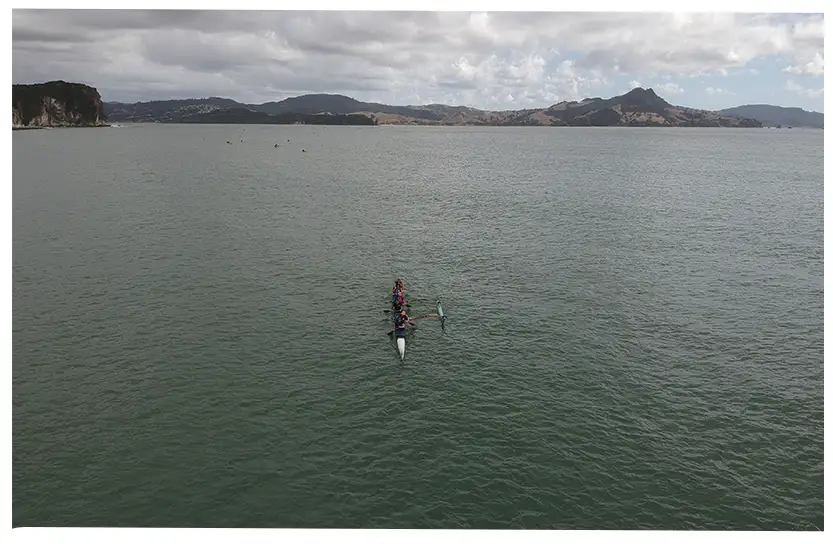
Kupe’s Crossing Place
Kupe, the legendary Polynesian explorer, journeyed from the Pacific to Aotearoa on the Matawhaorua, a great double-hulled waka.
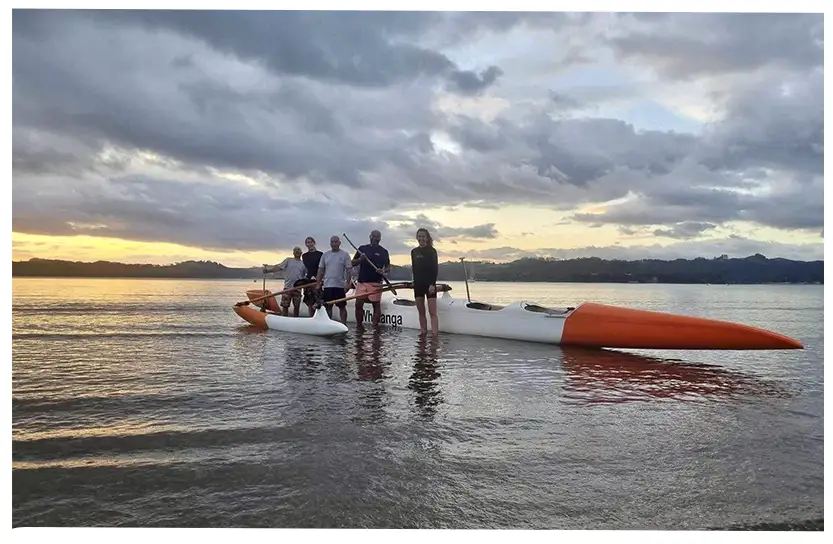
According to tradition, Kupe was ‘chasing a wheke’ – a giant octopus – which metaphorically describes how he and his crew navigated the vast Moana-nui-a-Kiwa (Pacific Ocean) using the many different currents.
While in this area, Kupe named a local river Taputapuātea, which refers back to his home in Rangiātea, with Te Whitianga-a-Kupe, Kupe’s crossing place, becoming the longstanding name for the area.
After returning home, Kupe provided directions for others to follow. The early voyagers travelled on waka hourua (large double-hulled canoes), while today, we paddle in waka ama, single-hulled canoes with an ama (outrigger) that provides stability.
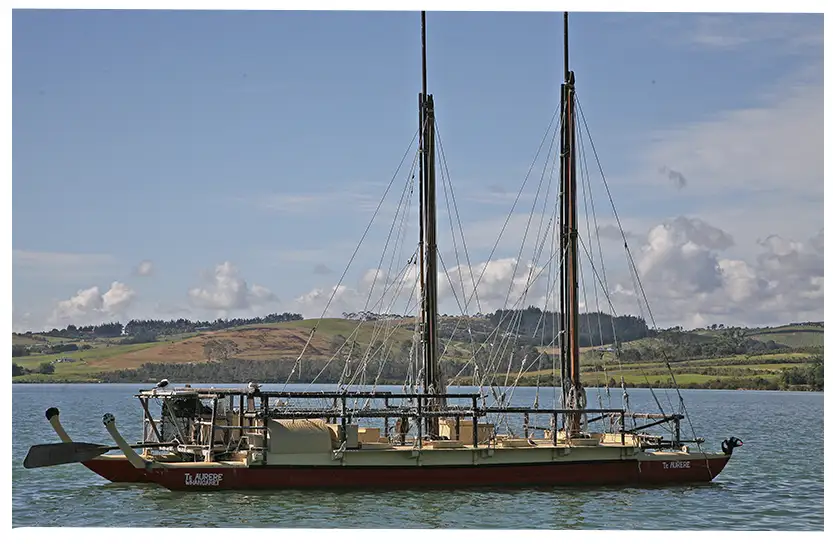
By W. Bulach – Own work, CC BY-SA 4.0, https://commons.wikimedia.org/w/index.php?curid=91255826
Before people arrived in Aotearoa, waka ama were the primary mode of transport between villages in the Pacific, playing a crucial role in daily life – used for fishing and gathering, visiting whānau, transporting news and resources. Today, waka ama is one of the fastest-growing water sports in Aotearoa and a powerful way to connect with kaupapa Māori and build community on the water.
E ai ki te kōrero? Did you know? Kuramārōtini, Kupe’s wife, is credited for naming the land Aotearoa after spotting a long white cloud, indicating land below, following their long journey at sea.
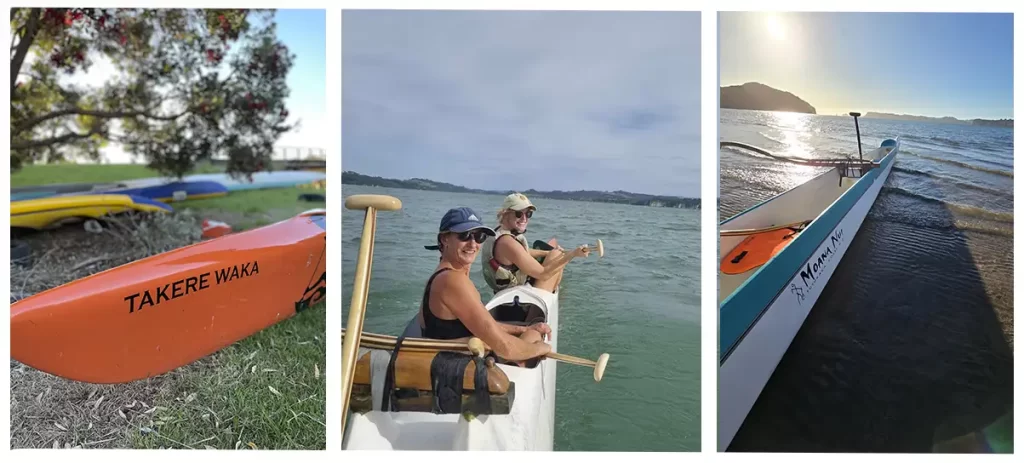
Te Arawa Waka
Hei, who arrived aboard the Te Arawa waka with Tamatekapua (captain of Te Arawa), settled in Te O ā Hei (Hahei) and became a prominent chief, the ancestor of Ngāti Hei.
Tikanga Tip: Traditional hoe (paddles) were pointed, and were sometimes used as weapons. This reinforces the importance of paddle etiquette (as mentioned in Article 1) – we always keep the rau (blade or pointed end) facing upwards to show respect and avoid causing harm to Papatūānuku or the paddle itself.
Waka Ama Today
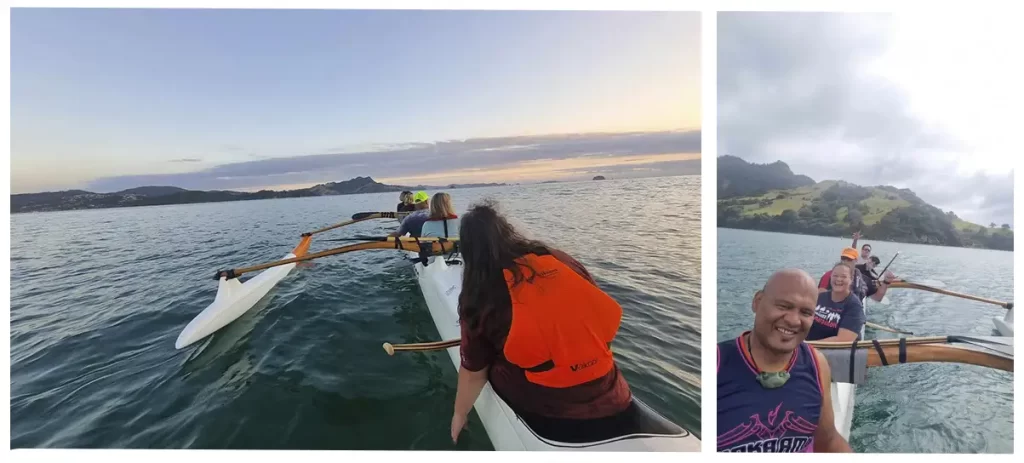
The first waka ama club in Whitianga, Taputapuātea Club, was established with the guidance and tautoko of Ngāti Hei in the early 2000s. Today, we continue paddling in a waka named Taputapuātea, kindly donated for our use, alongside Takere, the waka you’ll most often see on the wai.
Our current club, Whitianga Waka Ama, was founded in 2015 and was invited to participate in the Tuia 250 flotilla in 2019.
Nāku te rourou, nāu te rourou, ka ora ai te iwi.
As Mike Bennett puts it, “This whakataukī speaks to the reciprocal nature of supporting each other in kaupapa Māori events and has been instrumental in our journey – such as Joe Davis lending the waka to our club and Whitianga Waka Ama participating in Tuia 250.”
This whakataukī reminds us that by sharing resources and support, we uphold the kaitiakitanga (custodianship) and mana of the previous club while stepping into our role as new representatives.
Nau mai – we welcome paddlers of all experience levels to connect with us on the wai. Mauri ora! Join Whitianga Waka Ama on Facebook or email: wakawhiti@gmail.com
Read the first article of the Waka Ama series on Coromind here.
Words by Mike Benett and Natalie Jones


